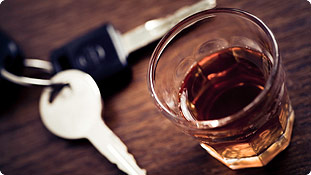Introduction to paraphernalia in Florida
Disclaimer: This page is for informational purposes only. It is not meant as legal advice. Use this page as a starting point for beginning a discussion with a licensed attorney.
When the term “paraphernalia” is used, most people envision pipes, bongs or lighters. Some who were a product of the 80’s may also think about mirrors and razors. Butt paraphernalia has a broad definition that can encompass almost any everyday item.
The term “drug paraphernalia” as defined by § 893.145 of the Florida Statutes means “all equipment, products, and materials of any kind which are used, intended for use, or designed for use in planting, propagating, cultivating, growing, harvesting, manufacturing, compounding, converting, producing, processing, preparing, testing, analyzing, packaging, repackaging, storing, containing, concealing, injecting, ingesting, inhaling, or otherwise introducing into the human body a controlled substance. . .”
Basically, it is anything you use in order to use a drug. Almost anything can be considered paraphernalia. Some things are obvious such as pipes or razors. But other objects such as pins, pens, aluminum foil or cans can also be considered paraphernalia if the States feels you are using them in a way that helps you use or store a controlled substance.
How is paraphernalia determined?
Florida Statute § 893.146 sets out the relevant factors to be used for determining if an object qualifies as “paraphernalia” under the law. Under the law, in addition to common sense and logic, you can use the following factors when determining whether an object is drug paraphernalia:
- Statements by an owner or by anyone in control of the object concerning its use.
- The proximity of the object, in time and space, to a direct violation of this act.
- The proximity of the object to controlled substances.
- The existence of any residue of controlled substances on the object.
- Direct or circumstantial evidence of the intent of an owner, or of anyone in control of the object, to deliver it to persons whom [he] [she] knows, or should reasonably know, intend to use the object to facilitate a violation of this act. The innocence of an owner, or of anyone in control of the object, as to a direct violation of this act shall not prevent a finding that the object is intended for use, or designed for use, as drug paraphernalia.
- Instructions, oral or written, provided with the object concerning its use.
- Descriptive materials accompanying the object which explain or depict its use.
- Any advertising concerning its use.
- The manner in which the object is displayed for sale.
- Whether the owner, or anyone in control of the object, is a legitimate supplier of like or related items to the community, such as a licensed distributor or dealer of tobacco products.
- Direct or circumstantial evidence of the ratio of sales of the object or objects to the total sales of the business enterprise.
- The existence and scope of legitimate uses for the object in the community.
- Expert testimony concerning its use.
In most cases, it will be obvious that an object is being used for drug purposes. There may be burn marks or other signs of use. In a criminal proceeding the State will usually have the object tested to see if it contains any type of residue from an illegal substance to assist in the prosecution. But all of the factors above may be considered.
Common Paraphernalia Items
The most common paraphernalia items are things such as pipes, rolling papers, and lighters for drugs such as marijuana. For cocaine most would think of mirrors, razors and straws. For other drugs needles or spoons come to mind. But the statutes actually contain a very comprehensive list of what is considered “paraphernalia.” Under the statute paraphernalia can be any of the following:
- Kits used, intended for use, or designed for use in planting, propagating, cultivating, growing, or harvesting of any species of plant which is a controlled substance or from which a controlled substance can be derived.
- Kits used, intended for use, or designed for use in manufacturing, compounding, converting, producing, processing, or preparing controlled substances.
- Isomerization devices used, intended for use, or designed for use in increasing the potency of any species of plant which is a controlled substance.
- Testing equipment used, intended for use, or designed for use in identifying, or in analyzing the strength, effectiveness, or purity of, controlled substances.
- Scales and balances used, intended for use, or designed for use in weighing or measuring controlled substances.
- Diluents and adulterants, such as quinine hydrochloride, mannitol, mannite, dextrose, and lactose used, intended for use, or designed for use in cutting controlled substances.
- Separation gins and sifters used, intended for use, or designed for use in removing twigs and seeds from, or in otherwise cleaning or refining, cannabis.
- Blenders, bowls, containers, spoons, and mixing devices used, intended for use, or designed for use in compounding controlled substances.
- Capsules, balloons, envelopes, and other containers used, intended for use, or designed for use in packaging small quantities of controlled substances.
- Containers and other objects used, intended for use, or designed for use in storing or concealing controlled substances.
- Hypodermic syringes, needles, and other objects used, intended for use, or designed for use in parenterally injecting controlled substances into the human body.
- Objects used, intended for use, or designed for use in ingesting, inhaling, or otherwise introducing cannabis, cocaine, hashish, or hashish oil into the human body, such as:
- Metal, wooden, acrylic, glass, stone, plastic, or ceramic pipes with or without screens, permanent screens, hashish heads, or punctured metal bowls.
- Water pipes.
- Carburetion tubes and devices.
- Smoking and carburetion masks.
- Roach clips: meaning objects used to hold burning material, such as a cannabis cigarette, that has become too small or too short to be held in the hand.
- Miniature cocaine spoons, and cocaine vials.
- Chamber pipes.
- Carburetor pipes.
- Electric pipes.
- Air-driven pipes.
- Chillums.
- Bongs.
- Ice pipes or chillers.
This list is very comprehensive. Paraphernalia can be almost anything. If you can use it, or have used it in connection with any type of illegal drug it is paraphernalia.
What does the State have to prove to convict me of possession of paraphernalia?
The jury instructions for possession state that in order to prove the crime of possession of marijuana the state must prove the following:
- You used or had in your possession with intent to use drug paraphernalia. To “possess” means to have personal charge of or exercise the right of ownership, management, or control over the thing possessed. Possession may be actual or constructive. Possession may be joint, that is, two or more persons may jointly possess an article, exercising control over it. In that case, each of those persons is considered to be in possession of that article.
- You had knowledge of the presence of the drug paraphernalia. If a person has exclusive possession of paraphernalia, knowledge of its presence may be inferred or assumed. If a person does not have exclusive possession of paraphernalia, knowledge of its presence may not be inferred or assumed.
What is constructive possession and how does it work? How is it different from actual possession?
There are two types of possession when it comes to drug charges: actual possession and constructive possession.
Actual possession means that the item is found on your person: such as in your hand, in your pocket, in your bra or some other place on your body. The jury instruction for actual possession states as follows:
Actual possession means:
- The paraphernalia is in the hand of or on the person, or
- The paraphernalia is in a container in the hand of or on the person, or
- The paraphernalia is so close as to be within ready reach and is under the control of the person.
Constructive possession means that the item was found in an area where you had dominion and control. Constructive possession is commonly charged in cases where the paraphernalia is found in a car. When the paraphernalia is found in a car where there are multiple persons riding, the state will charge constructive possession.
The jury instruction for constructive possession reads as follows:
- Constructive possession means the paraphernalia is in a place over which the person has control, or in which the person has concealed it.
- In order to establish constructive possession of paraphernalia if the item is in a place over which the person does not have control, the State must prove:
- (1) control over the paraphernalia and
- (2) knowledge that the paraphernalia was within the person’s presence.
- Possession may be joint, that is, two or more persons may jointly possess an article, exercising control over it. In that case, each of those persons is considered to be in possession of that article.
- Mere proximity to the paraphernalia is not sufficient to establish control over that controlled substance when it is not in a place over which the person has control.
Constructive possession gives the State a way to charge two or more people with the same item. However, it can also be a good defense. If you have questions about whether or not the State may be able to prove a charge of constructive possession against you, you should consult an attorney with experience in presenting this type of defense.
What is the penalty for a conviction?
Possession of paraphernalia is a first degree misdemeanor punishable by up to one year in jail. Most often there is probation sentence that is imposed instead of jail time. The probation usually involves community service and drug treatment.
What do I do if I am arrested ?
If you are arrested for a paraphernalia charge you should consult a criminal defense attorney. Some penalties for paraphernalia convictions can affect work, school and everyday aspects of you life. If you are accused of a paraphernalia crime, call the office of Finebloom, Haenel & Higgins to discuss your options! We are available 24/7 by calling (888) 424-7777.


